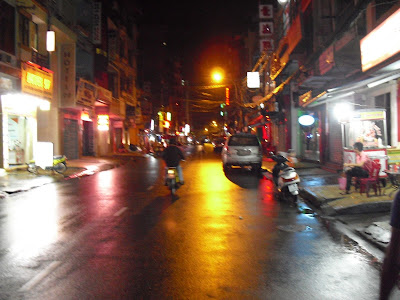With over 86 million people, the country of Vietnam is the 13th most populous country in the world. It is located in South East Asia on the Indochina Peninsula. China borders the north, with Cambodia to the Southwest, Laos to the Northwest, and the South China Sea to the east.
Vietnam has a very tropical climate in most of its regions. Because of the size of Vietnam, there are some major variations. Flat land only comprises 20% of the country, consisting of hills and densely forested mountains. Tall mountains and highlands make up the rest of the country, where the weather can be considerably cooler.
Tourism is increasing in popularity for Vietnam. The number of visitors for vacations and other tourist activities has increased progressively for the past ten years. In 2006, about 3.56 million international guests visited the country, an increase of 3.7% from 2005. More money is being invested into the coastal cities to stimulate additional tourism in the future. More people with English skills are being hired in the service industries to make tourists feel more comfortable.
For people interested in learning about the history and culture of Vietnam, they should visit Hoi Ạn. From the 15th to 19th centuries, this city was a major international shipping port, catering to Chinese, Japanese, Dutch and Indian settlers. Many of these cultures have left their mark on Vietnam that can still be seen today. Since then, most trading has moved to Da Nang, which left Hoi An as a quiet sleepy harbor. In 1999, Hoi An was declared a World Heritage site by UNESCO because of how well the city has been preserved. It is a very modern city with tourist accommodations to fit any budget. Less than five kilometers away from beautiful Cua Dai Beach, there are numerous hotels in the heart of the town as well as on the coast offering great prices. Hoi An is a great place to gain insight into Vietnam’s fascinating past.
Other than sight seeing, there are many other things to do in Vietnam. These would include eating exotic food, fishing, hiking, visiting beaches, and horseback riding. So for an adventurous vacation and a stimulating cultural experience, visit Vietnam.
(Source: http://famouswonders.com/category/vietnam/)
I went to Viet Nam to celebrate my 28th Birthday, July 23 - 26, 2011.
I found Vietnamese peeps nice and easy to deal with just like us Filipinos. One challenge that I think a tourist like me should consider when travelling to this country is that Vietnamese can hardly speak English. They can understand the language but they're having a hard time expressing themselves, so utmost patience is needed when conversing with them.
Xinchao Viet Nam!
Welcome to Ho Chi Minh City (formely Saigon)
Viet Nam Dong
Reunification Palace
Quan Am Pagoda
Notre Dame Cathedral
Tiger Cages
Ben Than Market
Cho Binh Tay Market
Central Post Office
Handicapped Handicrafts Display
War Remnants Museum
Diamond Plaza Mall
Saigon Beer - I love it!!!
Viet Nam by Night

Viet Nam by Day
MUST KNOW:
* Currency - Vietnam Dong
* Airport Code - VN
* Airport - Tan Son Nhat International Airport
* Exchange Rate - P1.00 = VD483.4292
* Viet Nam Dong has a lot of Zeros (so if you go to Viet Nam, you'll be a Millionaire of even Billionaire)
* Viet Nam is a communist country, social networking websites are being regulated by the government.
* Go to Ben Than Market & Cho Binh Thay for great deals on shopping.
* There are a lot of counterfeit North Face bags and Kipling's that you can buy at reasonable prices.
* Must try Mekong River Cruise to experience what Saigon City has to offer.
* Ho Chi Minh City (formerly Saigon) is the biggest city in Vietnam next to Hanoi.
* You can see a lot of scooters or motorbikes around the city, actually you will seldom see cars or taxi cabs.
* For affordable hotels or backpacker's inn, you can go to Pham Ngu Lao Street.
* Viet Nam dishes are more on vegetables and soups.
* Vietnamese can hardly speak English, so be patient every time you talk to them, they're nice after all.


























